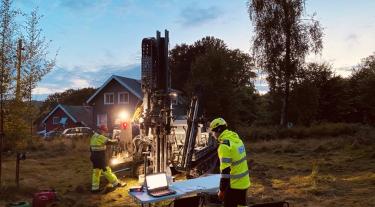Cone Penetration Testing (CPTU) is widely used to assess soil conditions at offshore wind turbine locations. Design standards exist to relate the CPTU results to soil classifications and engineering design parameters in sand and clay soils, but not silts. Similarly, bearing capacities are specified for fully-drained and undrained conditions, but not partially-drained conditions. As the offshore wind industry moves into emerging markets where these silty soils are more common, it is more important than ever to understand their behaviour .
The CSi project aims to:
- Gather a high-quality database of measured data from silty, partially-drained soils
- Combine this with data from lab testing and numerical modelling
- Derive recommendations for investigating and interpreting silty soils and silt mixtures
- Generate generalised, robust industry guidance for inclusion in future standards
This should allow offshore wind developers to:
- De-risk foundation design and installation
- Reduce costs by eliminating unnecessary conservatism
For more information please see Augustesen et al, CSi: A Joint Industry Project into CPTUs in Silty Soils and Fioravante et al, Calibration Cone Penetration Testing in Silty Soils, both presented at the Cone Penetration Testing conference 2022, available from Cone Penetration Testing 2022 | Guido Gottardi, Laura Tonni | Taylor & (taylorfrancis.com).
Project end date
End of 2022 – initial findings will be presented on CPT conference in June 2022.
Project lead
Ørsted
Partners
Equinor, RWE, Vattenfall, ScottishPower Renewables, Shell

Setup under
Offshore Wind Accelerator (OWA)
Contact

Neil Adams, Project Manager
neil.adams@carbontrust.com


